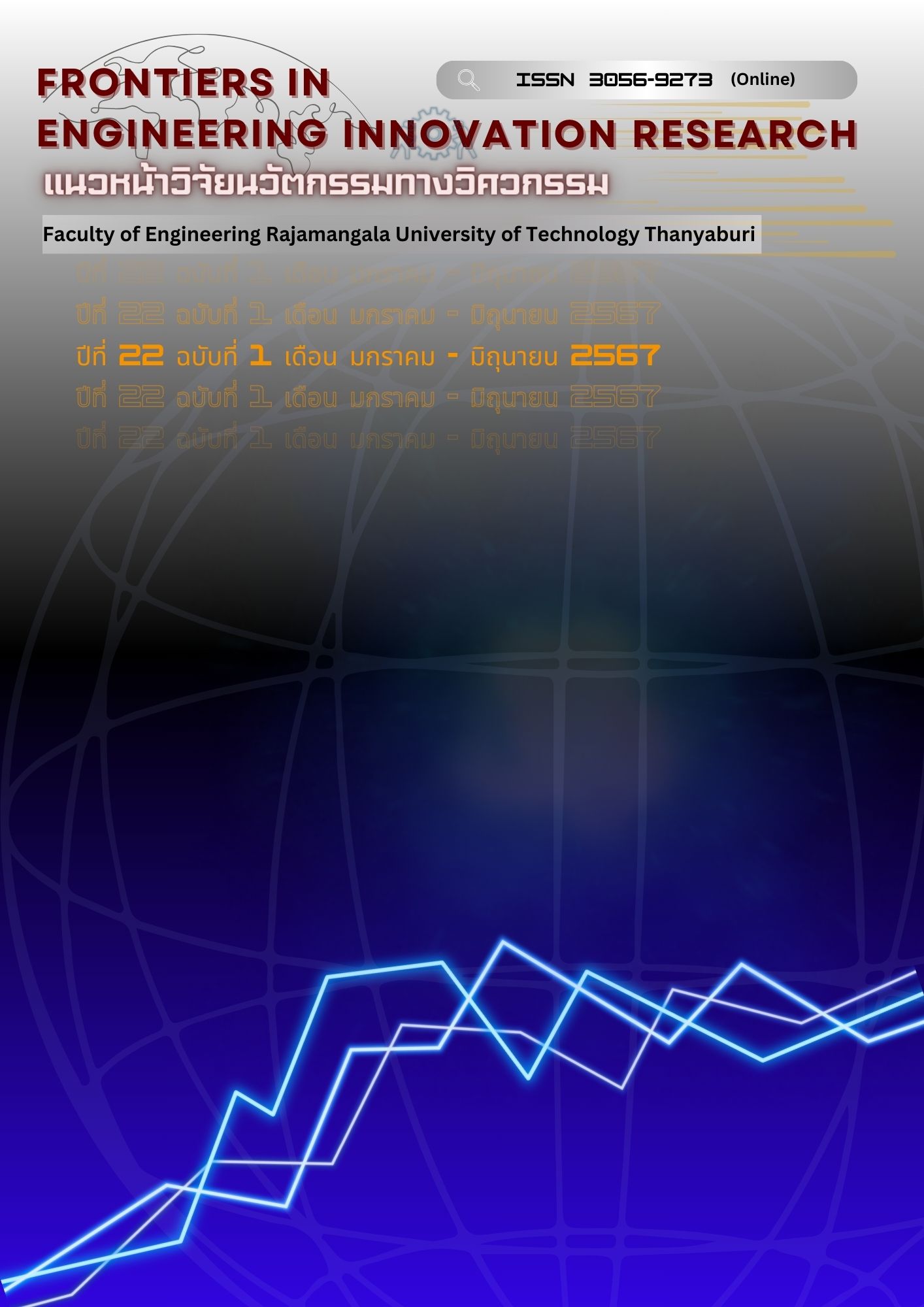An Analysis of Coarse Aggregate Content of Hardened Concrete using Image Processing
Main Article Content
Abstract
The study aims to develop a method for the analysis of coarse aggregate content of hardened concrete using image processing. The developed method was applied to estimate the coarse aggregate content of hardened concrete prepared in the laboratory with a known mix design in order to verify its efficiency. The concrete samples were prepared in three different sizes with two types of cylindrical shapes and one type of cubic shape. Coarse aggregates with maximum sizes of ¾ inch and 1½ inches were used in the concrete mixture. The 0.40, 0.50, and 0.60 by weight water-to-cement ratios (w/c), and the 0.44 by volume of fine aggregate-to-aggregate ratio (s/a) were used for mixing. Subsequently, cross-sectional images of the concrete samples with each mix proportion and age were prepared to determine the coarse aggregate content. The analytical result of coarse aggregate content with maximum sizes of ¾ inch yields a lower margin of error than 1½ inches. The analytical results indicated that the maximum size of coarse aggregate significantly affects the analysis of the coarse aggregate content of hardened concrete with both cylinder-and cube-shaped of concrete samples. Additionally, the analysis demonstrates that increasing the water-to-cement ratio leads to higher variability in the results indicating that higher water content contributes to increased discrepancies. Moreover, both the age and the different cylindrical size of the concrete sample insignificantly affect analysis of the coarse aggregate concrete of hardened concrete.
Article Details

This work is licensed under a Creative Commons Attribution-NonCommercial-NoDerivatives 4.0 International License.
The manuscript, information, content, picture and so forth which were published on Frontiers in engineering innovation research has been a copyright of this journal only. There is not allow anyone or any organize to duplicate all content or some document for unethical publication.
References
British standards institution. BS1881:Part24 Methods for analysis of hardened concrete. BSI. 1988.
Jung MS, Shin MC and Ann KY. Fingerprinting of a concrete mix proportion using the acid neutralisation capacity of concrete matrices. Construction and building materials. 2012;26(1):65-71.
Ringot E and Bascoul A. About the analysis of microcracking in concrete. Cement and concrete composites. 2001;23(2-3):261-6.
Ammouche A, Riss J, Breysse D, and Marchand J. Image analysis for the automated study of microcracks in concrete. Cement and concrete composites. 2001;23(2-3):267-78.
Valenca J, Dias-da-Costa D, and Julio ENBS. Characterization of concrete cracking during laboratorial tests using image processing. Construction and building materials. 2012;28(1):607-15.
Alida M, Saveria M and Stella Eleonora P. Evaluation of the early-age-shrinkage of fiber reinforced concrete (FRC) using image analysis methods. Construction and building materials. 2015;101:596-601.
Celalettin B, Bekir C, Semsettin K, and Serkan Ismail U. Assessment of concrete compressive strength by image processing technique. Construction and building materials. 2012;37:526-32.
Barbosa FS, Beaucour AL, Farage MCR and Ortola S. Image processing to the analysis of segregation in lightweight aggregate concretes. Construction and building materials. 2011;25(8):3375-81.
Mora CF, Kwan AKH and Chan HC. Particle size distribution analysis of coarse aggregate using digital image processing. Cement and concrete research. 1998;28(6):921-32.
Kwan AKH, Mora CF, and Chan HC. Particle shape analysis of coarse aggregate using digital image processing. Cement and concrete research. 1999;29(9):1403-10.
Larry B, Ken C, and John Z. Estimation of limestone particle mass from 2D images. Power technology. 2003;132(2-3):184-9.
Barbosa FS, Farage MCR, Beaucour AL, and Ortola S. Evaluation of aggregate gradation in lightweight concrete via image analysis. Construction and building materials. 2012;29:7-11.
American Society for Testing and Materials. ASTM C33. Standard specification for concrete aggregates. ASTM International. 2003.
American Society for Testing and Materials. ASTM C1356 Standard test method for determination of phases in portland cement clinker by microscopical point-count procedure. ASTM International. 1996.


